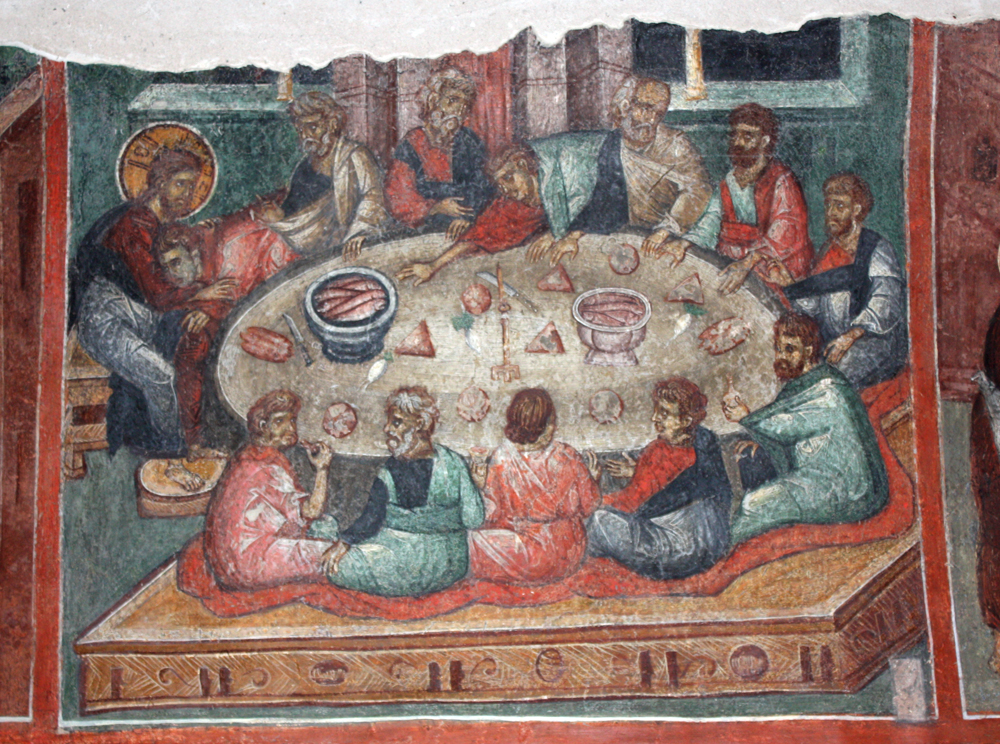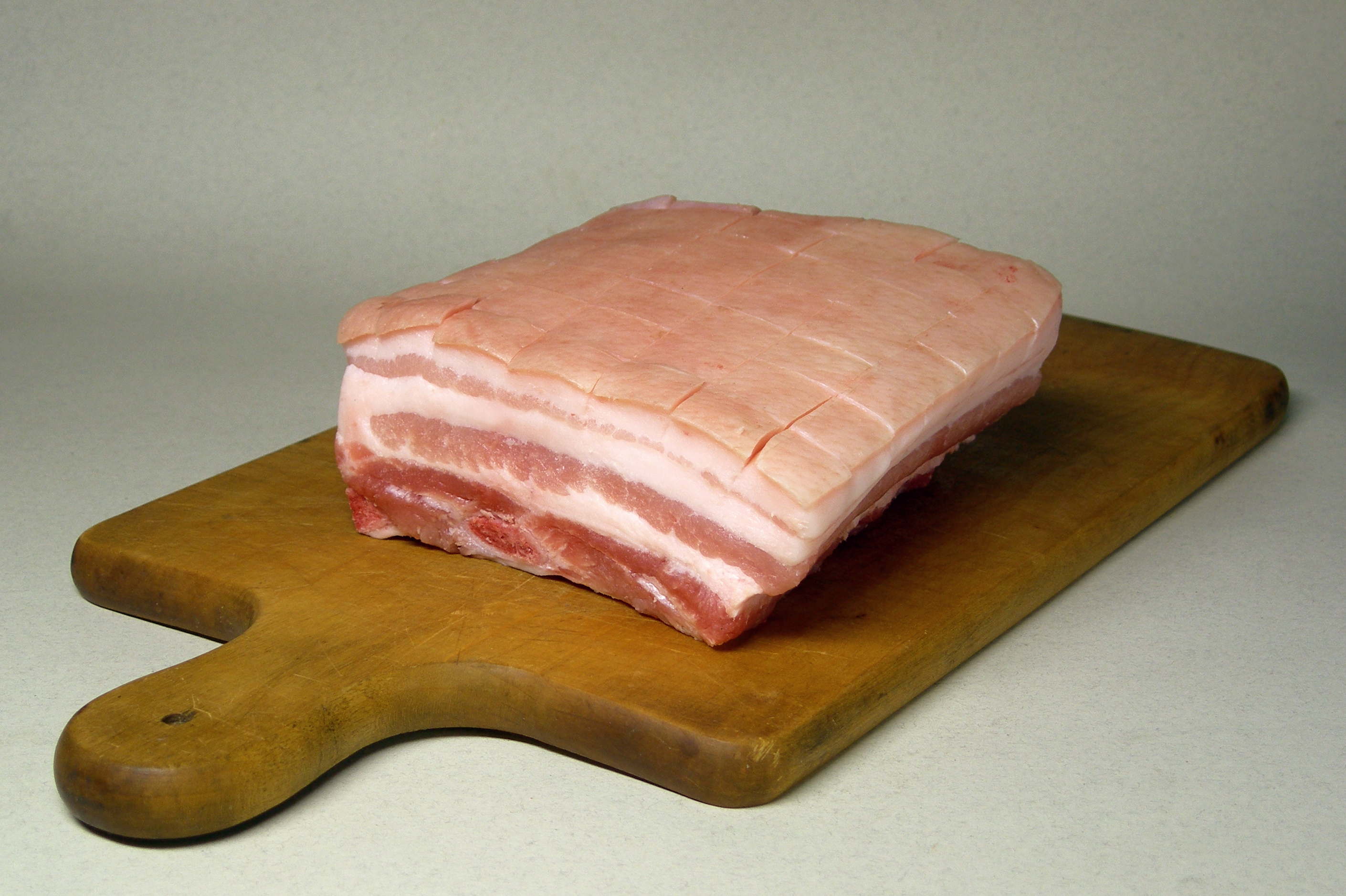|
Folar
Folar is a traditional Portuguese bread served at Easter. The recipe varies from region to region and it may be sweet or savory. During Easter festivities, godchildren usually bring a bouquet of violets to their godmother on Palm Sunday and this, on Easter Sunday, offers him a folar. Folar is sometimes served with a boiled egg, that symbolically represents rebirth and the Resurrection. Folar de Chaves, popular in the north-eastern Portuguese regions of Chaves and Valpaços, is stuffed with pork, ham, salpicão and linguiça. There are also sweet folars like the folar from Olhão, that consists of seven layers with melted sugar and cinnamon, and the more common folar with anise and cinnamon. See also * Šoldra, Silesian Easter bread stuffed with meat *Easter foods Easter,Traditional names for the feast in English are "Easter Day", as in the ''Book of Common Prayer''; "Easter Sunday", used by James Ussher''The Whole Works of the Most Rev. James Ussher, Volum ... [...More Info...] [...Related Items...] OR: [Wikipedia] [Google] [Baidu] |
Easter Bread
In many European countries, there are various traditions surrounding the use of bread during the Easter holidays. Traditionally the practice of eating Easter bread or sweetened "communion" bread traces its origin back to Byzantium and the Orthodox Christian church. The recipe for sweetened or "honey-leavened" bread may date back as far as the Homeric Greek period based on anecdotal evidence from classical texts that mention this type of special food. It is also widely known that sweetened bread desserts similar to panettone were a Roman favorite. Bulgaria, Russia, Belarus, Ukraine, Romania, Poland Kozunak, kulich, and paska A ''Kozunak'' is the traditional Easter bread in Bulgaria, '' kulich'' is one of different traditional Russian '' paska'' Easter breads. ''Kolach'' is a traditional Czech bread made at Christmas in the shape of a ring. Usually, three rings are stack on top of each other to represent the Holy Trinity. Ukrainian Easter breads are also called ''paska'', where oft ... [...More Info...] [...Related Items...] OR: [Wikipedia] [Google] [Baidu] |
Šoldra
Šoldra, Šoldr ( pl, szołdra, szołdr) is a traditional Silesian cuisine Easter bread. It is also known as muřin ( pl, murzyn, murzin). It is traditionally prepared and eaten on Easter Sunday. Šoldra/szołdra is an archaic Polish term for ham and murzyn/muřin literally means "black person", and refers to blackening of the dish. The dough is stuffed with sausage varieties such as smoked meat sausage, white wine sausage, and ham/pork sausage. Almond meal is used. See also * Folar, Portuguese Easter bread sometimes stuffed with meat *Easter foods Easter,Traditional names for the feast in English are "Easter Day", as in the ''Book of Common Prayer''; "Easter Sunday", used by James Ussher''The Whole Works of the Most Rev. James Ussher, Volume 4'') and Samuel Pepys''The Diary of Samuel ... * List of stuffed dishes References Silesian cuisine Easter bread Stuffed dishes {{Poland-cuisine-stub ... [...More Info...] [...Related Items...] OR: [Wikipedia] [Google] [Baidu] |
Portuguese Sweet Bread
Portuguese sweet bread (Portuguese: ''pão doce'' "sweet bread" or ''massa sovada'' "kneaded dough") is a bread made with milk, sugar, eggs, yeast, flour and sometimes lemon peel to produce a subtly sweet lightly textured loaf or rolls. A slightly different recipe is made during Easter that is known as '' folar'' and often contains a hard-boiled egg. The bread was brought to Hawaii by Portuguese immigrants from Madeira and the Azores. Under the name Hawaiian rolls, Portuguese sweet bread is now considered a quintessential dish in Hawaiian cuisine and is widely consumed throughout the United States. Portuguese sweet bread is traditionally made in Madeira and the Azores around Christmas, and the Easter version is made around Easter, but it is also available year-round on the islands. It is uncommon to find this type of bread in mainland Portugal. It is traditionally baked in a stone oven known as a ''forno''. The bread is usually served simply with butter and is sometimes served ... [...More Info...] [...Related Items...] OR: [Wikipedia] [Google] [Baidu] |
Portugal
Portugal, officially the Portuguese Republic, In recognized minority languages of Portugal: :* mwl, República Pertuesa is a country located on the Iberian Peninsula, in Southwestern Europe, and whose territory also includes the Macaronesian archipelagos of the Azores and Madeira. It features the westernmost point in continental Europe, its mainland west and south border with the North Atlantic Ocean and in the north and east, the Portugal-Spain border, constitutes the longest uninterrupted border-line in the European Union. Its archipelagos form two autonomous regions with their own regional governments. On the mainland, Alentejo region occupies the biggest area but is one of the least densely populated regions of Europe. Lisbon is the capital and largest city by population, being also the main spot for tourists alongside Porto, the Algarve and Madeira. One of the oldest countries in Europe, its territory has been continuously settled and fought over since prehistoric tim ... [...More Info...] [...Related Items...] OR: [Wikipedia] [Google] [Baidu] |
Portuguese Cuisine
The oldest known book on Portuguese cuisine, entitled ''Livro de Cozinha da Infanta D. Maria de Portugal'', from the 16th century, describes many popular dishes of meat, fish, poultry and others. ''Culinária Portuguesa'', by António-Maria De Oliveira Bello, better known as Olleboma; was published in 1936. Despite being relatively restricted to an Atlantic, Celtic sustenance, the Portuguese cuisine also has strong French and Mediterranean influences. The influence of Portugal's spice trade in the East Indies, Africa, and Americas is also notable, especially in the wide variety of spices used. These spices include '' piri piri'' (small, fiery chili peppers), white pepper, black pepper, saffron, paprika, clove, allspice, cumin, cinnamon Cinnamon is a spice obtained from the inner bark of several tree species from the genus ''Cinnamomum''. Cinnamon is used mainly as an aromatic condiment and flavouring additive in a wide variety of cuisines, sweet and savoury dishes ... [...More Info...] [...Related Items...] OR: [Wikipedia] [Google] [Baidu] |
Easter Foods
Easter,Traditional names for the feast in English are "Easter Day", as in the ''Book of Common Prayer''; "Easter Sunday", used by James Ussher''The Whole Works of the Most Rev. James Ussher, Volume 4'') and Samuel Pepys''The Diary of Samuel Pepys, Volume 2'') as well as the single word "Easter" in books printed i157515841586 also called Pascha (Aramaic, Greek, Latin) or Resurrection Sunday, is a Christian festival and cultural holiday commemorating the resurrection of Jesus from the dead, described in the New Testament as having occurred on the third day of his burial following his crucifixion by the Romans at Calvary . It is the culmination of the Passion of Jesus Christ, preceded by Lent (or Great Lent), a 40-day period of fasting, prayer, and penance. Easter-observing Christians commonly refer to the week before Easter as Holy Week, which in Western Christianity begins on Palm Sunday (marking the entrance of Jesus in Jerusalem), includes Spy Wednesday (on which the betra ... [...More Info...] [...Related Items...] OR: [Wikipedia] [Google] [Baidu] |
Silesian Cuisine
Silesian cuisine belongs to the region of Silesia in Central Europe. It is a subtype of Polish and German cuisine with many similarities to and signs of the influence of neighbouring cuisines. The cuisine is particularly renowned for its poppy seed and knödel dishes. List of Silesian dishes * ''Żymła'' - a well-baked bread roll, oval with a division in the middle, topped with poppy seeds, similar to Austrian ''Kaisersemmel. * '' Kluski śląskie/Schlesische Kartoffelklöße'' (Silesian dumplings) - round dumplings served with gravy, made of mashed boiled potatoes, finely grated raw potatoes, an egg, grated onion, wheat flour, and potato flour * ''Schlesisches Himmelreich'' ("Silesian Heaven") - a dish of smoked pork cooked in water with dried fruit and spices * '' Rolada z modrą kapustą'' (rouladen with red cabbage) - best-quality beef-meat roll; stuffed with pickled vegetable, ham, and good amount of seasoning; always served with red cabbage (with fried bacon, fresh onion a ... [...More Info...] [...Related Items...] OR: [Wikipedia] [Google] [Baidu] |
Anise
Anise (; '), also called aniseed or rarely anix is a flowering plant in the family Apiaceae native to Eurasia. The flavor and aroma of its seeds have similarities with some other spices and herbs, such as star anise, fennel, licorice, and tarragon. It is widely cultivated and used to flavor food, candy, and alcoholic drinks, especially around the Mediterranean. Description Anise is an herbaceous annual plant growing to or more. The leaves at the base of the plant are simple, long and shallowly lobed, while leaves higher on the stems are feathery pinnate, divided into numerous small leaflets. The flowers are either white or yellow, approximately in diameter, produced in dense umbels. The fruit is an oblong dry schizocarp, long, usually called "aniseed".Anise (''Pimpinella anisum'' L.) from Gernot ... [...More Info...] [...Related Items...] OR: [Wikipedia] [Google] [Baidu] |
Olhão
Olhão (), officially known as Olhão da Restauração, is a city and municipality in the Algarve region of southern Portugal. The population of the municipality in 2011 was 45,396, in an area of . Located near the regional capital Faro and forming a single urban agglomeration, it is a fishing port and tourist center. Along with Faro, Loulé and Tavira, Olhão forms a conurbation from the eastern and central Algarve. History Since pre-history, Olhão has had vestiges of human occupation, although the oldest written record dates only from 1378, referring to a place called ''Olham''. The estuary and abundance of water were decisive factors that influenced fishermen, at the beginning of the 17th century, to congregate along the beach of Olhão. The settlement developed even as officials in Faro discouraged concentration along this coast. Yet, after the middle of the 17th century, growth was driven by the protection offered by the Fort of São Lourenço do Bugio, which guarded th ... [...More Info...] [...Related Items...] OR: [Wikipedia] [Google] [Baidu] |
Linguiça
''Linguiça'' or ''lingüiça'' () calabresa is Calabrian chili-seasoned smoke-cured pork sausage seasoned with garlic and paprika, popular in Portugal, Brazil, Lusophone countries, and the U.S. state of Hawaii, created by Calabrian immigrants in the Bixiga district of São Paulo in Brazil inspired by the sausage of Calabria. It is often used as a topping for pizzas. Uses in Brazilian and Portuguese cuisine ''Linguiça'', like many other sausages, is generally served as part of a meal, typically accompanied by rice, beans, and other pork products. '' Feijoada'', for example, is a traditional Portuguese and Brazilian dish (considered Brazil national dish), also common in Angola, that incorporates ''linguiça'' with beans, ham hocks, and other foods. In Brazil, one variant is especially popular: the ''linguiça calabresa'' or simply ''calabresa'', prepared originally with Calabrese pepper (nowadays with South American pepper) by Italian immigrants, and particularly used in p ... [...More Info...] [...Related Items...] OR: [Wikipedia] [Google] [Baidu] |
Pork
Pork is the culinary name for the meat of the domestic pig (''Sus domesticus''). It is the most commonly consumed meat worldwide, with evidence of pig husbandry dating back to 5000 BCE. Pork is eaten both freshly cooked and preserved; curing extends the shelf life of pork products. Ham, gammon, bacon, and sausage are examples of preserved pork. Charcuterie is the branch of cooking devoted to prepared meat products, many from pork. Pork is the most popular meat in the Western world, particularly in Central Europe. It is also very popular in East and Southeast Asia (Mainland Southeast Asia, Philippines, Singapore, and East Timor). The meat is highly prized in Asian cuisines, especially in Mainland China, for its fat content and texture. Some religions and cultures prohibit pork consumption, notably Islam and Judaism. History Pigs were domesticated in Mesopotamia around 13,000 BC. Charcuterie is the branch of cooking devoted to prepared meat products su ... [...More Info...] [...Related Items...] OR: [Wikipedia] [Google] [Baidu] |







